Although I'll be making more trip-inspired dishes, this is the very last of the trip-report posts from my last trip to Japan. Today, I'm going to share with you the details from my very first dinner back in Nagoya, our Shamo (Fighting Cock aka Bantam) dinner at Gotetsu.
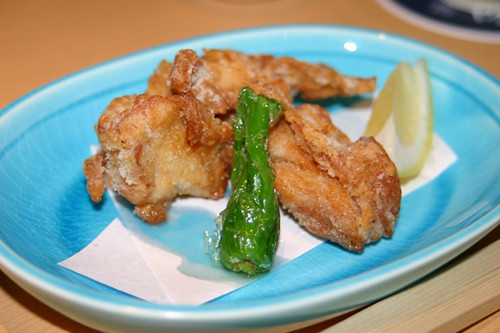
Gotetsu is conceptualized and owned ('produced' as the Japanese say) by the 8th generation owner of the very famous Tamahede in Tokyo. Tamahede is THE place for Shamo cuisine, and my mother was very keen on trying Gotetsu. Seeing that Nagoya is famous for chickens of their own (Nagoya Ko-chin - yum!), my vote was to go for the local chickens. I don't quite remember how, but she convinced me that Gotetsu was worth a try because of the Tamahede connection...
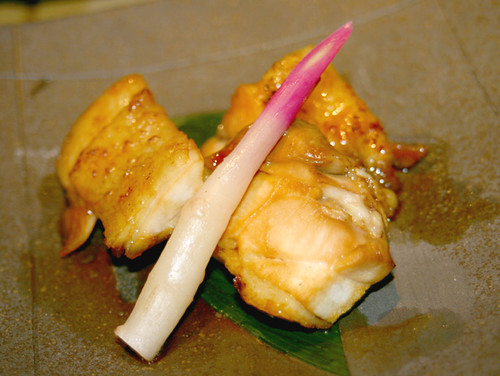
I have to say, this might have been one of the only disappointing meals in Japan. Disappointing might be too harsh, but it sure didn't win me over instantly like the other foods I had during my trip. The food lacked that feeling of delicate care and attention that the other places packed into each bite.
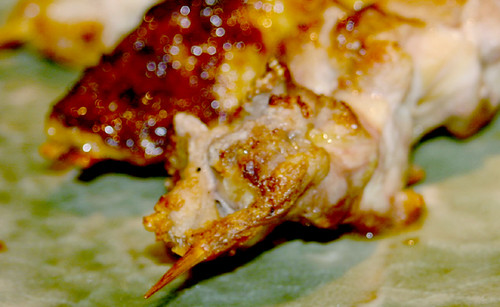
We definitely had a big chickeny dinner, though! We started with some appetizers of pickled chicken liver and moved onto chicken pieces teriyaki grilled, skewered and salt-grilled, as well as deep fried. Unfortunately, I don't remember the shamo itself being all that spectacular. Yes, it was flavorful with a good texture, but so is my organic chicken here in the US!
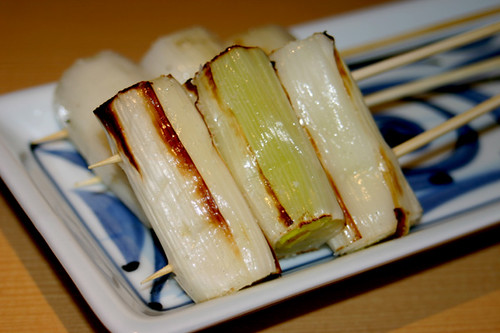
Our interlude between the dry chicken and a soupy dish (always gotta have some soup dish if it's a true Japanese meal!) was the Fukaya Negi skewers. Fukaya Negi are brilliantly named negi (green onions) from the Fukaya region. They boast a sugar content equal to tangerines! These were tender and flavorful, full of steaming - I mean, STEAMING - green onion juices.
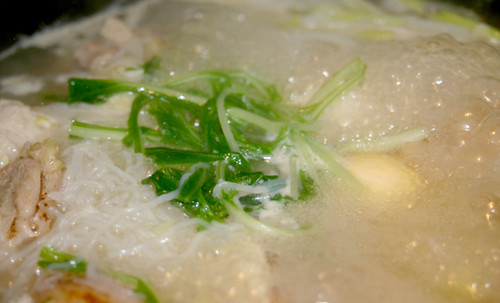
Our main dish for the evening was the cooked-at-your-table hot pot, which involved cooking chicken in a rich, strong chicken broth. The broth was bubbling violently and continued to do so until we were done.
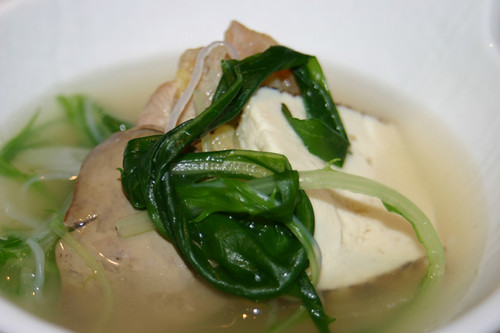
A striking contrast was the peaceful silence the broth and the ingredients took on when we plated the cooked items. These two pictures seem to highlight the Japanese concept of "動" (Dou, movement) and "静" (Sei, quiet). The yin and yang, contained within the table, poetically enticing us to eat.

The true value of Gotetsu, however, is not to be judged by these dishes, I'm told by my mother. It is in their Oyako Don (Parent-Child Over Rice). If you recall, I made a seafood Oyako Don a while back, but traditional Oyako Dons are always made with chicken and eggs. Some people add onions and various other goods to it, but at Gotetsu, it's just the parent and the child - nothing but the chicken and egg, relaxing over the rice. Unlike other versions I've had in the past, this Oyako Don was one rich beast. There was no egg whites used, and the entire blanket of egg was made by briefly cooking deeply orange, almost overwhelmingly flavorful, potent yolks. Topped with a raw egg, this was one hell of an eggy dish!
If you are thinking - "eeewwwweeee, raw eggs????" - we eat a whole lot of raw eggs in Japan. The eggs and their parents are routinely tested for Salmonella and other egg-borne pathogens to ensure that these eggs are safe to eat. If you like spaghetti carbonara, you'll like raw eggs! Raw eggs pack that super creaminess without the dairy butteriness.
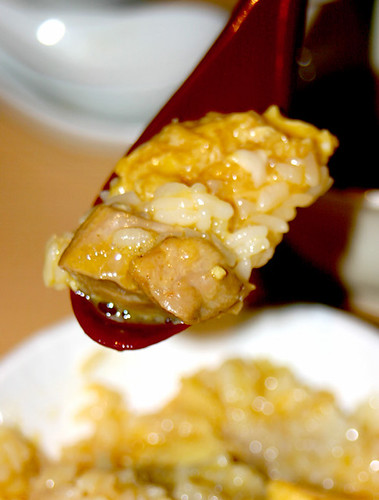
We mashed the raw egg into its siblings in the omlette-like structure on top of the rice, and let the egg intertwine nicely with each rice grain. There was just enough salt to cut the richness of the eggs. Now, I am not a particularly big fan of the potent egg-flavor, but I liked this dish. The main difference between this dish and just eating concentrated eggs is that the lightly cooked eggs here had dashi in it - the eggs were infused with a broth that provided the perfect balance of umami.
Although there is NO WAY I could eat more than a small bowl of this Oyako Don, Gotetsu redeemed itself with this dish. It surely was original as it had never occurred to me to make Oyako Don with just the yolks with dashi and chicken bits.
So.. I ate the Bantam, our college mascot. ...but only sort of. Pure-bred Shamo is considered a Natural Heritage Treasure (or how-ever I am supposed to translate 'tennennkinenbutsu'), which basically means that the government decided it was a special cultural and biological icon that we shouldn't eat. All chicken labeled as 'shamo' for eating are only 75% Shamo or less, and usually crossed with other kinds of chicken (and then sometimes back-crossed with Shamo for you genetics buffs!). Now, whether or not the eggs in the Oyako Don were Shamo eggs or not remains to be solved...
2 comments:
?! "Pickled Chicken Liver" ?!
That's more eewwwwwwwww than raw eggs!
Baby Bear, you ate Picked Chicken Liver and you shied away from the Fried Stuffed Pork Intestine I was thinking about ordering the other day?!
You sure are selectively adventurous. :)
Post a Comment